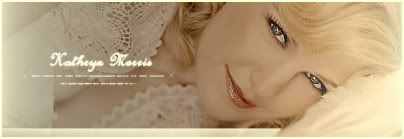Post by Naj on Oct 27, 2005 8:40:31 GMT -5
Female leads on TV dramas seen as natural progressions
By ROB OWEN
October 25, 2005
This season, women rule TV dramas.
Following last year's success of "Desperate Housewives," that development should come as no surprise; TV executives always are eager to emulate recent success.
Although women have had prominent roles in TV since at least the 1960s, this year there is a tangible difference: married women in the driver's seat.
Mary Tyler Moore, a successful single, headlined a self-titled sitcom in the 1970s. Dana Scully, another successful single, was Fox Mulder's equal in every sense on "The X-Files," a 1990s drama.
But the new trend elevates wives and relegates husbands to playing second fiddle, particularly in prime-time dramas:
- On NBC's "Medium," Patricia Arquette plays the title role and gets the majority of screen time.
- The disparity is more pronounced on CBS's imitator, "Ghost Whisperer," where Jennifer Love Hewitt's psychic is front and center while her paramedic husband (David Conrad) appears less frequently to offer comfort and support.
- On CBS's "Close to Home," Indianapolis prosecutor Annabeth Chase (Jennifer Finnigan) is the focus, while her husband is seen only in rare scenes.
- On ABC's "Commander in Chief," where first gentleman Rod (Kyle Secor) wins more screen time than most of these other "plus one" guys, he still plays a clear second to his wife, President Mackenzie Allen (Geena Davis).
The reasons for the shift are myriad: They're economic and demographic, they're out of narrative necessity and they're a result of the maturing of a medium that mirrors changes in society.
Viewers have seen married women in leading roles in the past, especially on sitcoms ("Maude" in the 1970s), but there are fewer examples in prime-time dramas. It has happened from time to time (e.g. Mary Beth Lacey on "Cagney & Lacey" in the 1980s), but usually the female leads in TV dramas are single, as on "Ally McBeal," "Judging Amy," "Gilmore Girls," etc.
In her upcoming book "Redesigning Women: Television After the Network Era" (University of Illinois Press, April 2006), University of Michigan communication studies assistant professor Amanda Lotz charts the rise of female-centered dramas from 1945 to the present in nine-year increments.
Seven series fitting that description were made between 1975 and 1984 and more than double that number from the mid-1980s to the mid-'90s.
The floodgates burst open from 1995 to 2004, when more than 35 female-centered dramas were produced. Even then, many of those series starred young single women ("Buffy the Vampire Slayer," "Felicity," "Dark Angel" and more) and aired on smaller networks or niche cable outlets. In time, TV shows with female leads migrated to the larger networks, particularly after NBC's success with "Providence" in 1999.
"In the realm of television history, it is still pretty new," Lotz said. "We didn't really (regularly) have women as leads of successful dramas until the mid-to-late '90s. ... The fact that they were single women is significant as part of the complicated history of feminism and how we understand it in popular culture.
"Wrongly, it was assumed that women had to be single to be progressive female characters. ... It took the success of a number of single female characters in these types of shows before taking the next step of female characters who are also in committed and equal relationships."
John Gray, executive producer of "Ghost Whisperer," acknowledged the roles of men and women in TV dramas are changing.
"We've reversed what we saw for so many years where women were just the grace notes," Gray said.
"Ghost Whisperer" writer/producer Emily Fox said she doesn't think of Conrad's character as supporting.
"I think of him as a main character, but she is our point of view," Fox said. "It's more recent that we've had dramas told from a female point of view where females are doing something other than just looking for love - where they're cops, investigators and now ghost whisperers."
And because the focus is on their jobs, Gray notes, their marital lives are in the background. That presents a new challenge for TV writers who aren't accustomed to crafting secondary stories for male spouses.
Lotz pointed to "Medium," which gives the husband more screen time because the couple have three young children. On "Close to Home," Annabeth and Jack (Christian Kane) have a newborn.
"It almost feels like they don't know what to do with the husband" on "Close to Home," Lotz said. "They want (Annabeth's) personal life; it's an important part of her character to understand she's a young mother, but it seems like it's difficult to blend those aspects (with workplace stories)."
She also notes that because it's a workplace-centered procedural drama, regardless of the gender of the lead, the show would have a 90 percent-10 percent balance of work-to-home scenes.
Garth Ancier, chairman of The WB, said television reflects American cultural shifts.
"You're in a work force where almost half the workers are women," he said.
The WB's new drama "Related" focuses on four adult sisters; only one of them is married, and her husband is a supporting character. "The majority of women in this country are breadwinners for their families, so you're just reflecting society," Ancier said.
Tina Pieraccini, professor of broadcasting at the State University of New York at Oswego, agreed.
"Culturally it's not politically correct anymore to have women put second," she said. "You can do that with men, and nobody's going to complain. ... Look at 'Desperate Housewives;' all their husbands are either dying or in the background."
Just as society has evolved, so have television's depictions of it.
And so we get the supportive husband who understands his wife's busy work schedule ("Close to Home") or her supernatural abilities ("Medium," "Ghost Whisperer") as she balances family and career responsibilities.
Commensurate with the rise of women, men's roles have been continually diminished throughout TV history, according to Rich Hanley, director of graduate programs in the School of Communications at Quinnipiac University in Hamden, Conn.
"Men have been shuffled off to the margins of television in a slow, steady process," he said. "The general role of men shifted from that of husband/provider/father figure in the 1950s and 1960s to that of ignoramus in the 1970s and 1980s and eventually to that of idiot in the 1990s. Think of 'Father Knows Best' morphing to 'All in the Family' to 'King of Queens.'"
He attributes that shift, in large part, to economics.
"TV will reflect what the audience consists of," he said. "This is one of those periods where women are controlling the remote and they want to see reflected through that culture stuff they're familiar with. ... Men aren't watching network television as much as they previously did. They're watching ESPN; they're playing video games."
Married women in leading roles also mirrors the life changes for the targeted 18-to-49 female audience, said Sharon Ross, an assistant professor in the TV department at Columbia College in Chicago.
"What happens next for all the women who grew up with shows about single women? The logical trajectory is that those women get married and have kids, and you can't keep feeding them what you've been giving them," Ross said, pointing out that even at the end of its run, the women of "Sex and the City" (more of a drama than a comedy by its conclusion) had all paired off and were no longer single.
The role of women behind the scenes in Hollywood may also be a factor, acknowledged Laverne McKinnon, senior vice president of drama development at CBS.
"CBS is a great example of it with ('CSI: Crime Scene Investigation' executive producer) Carol Mendelsohn, ('CSI: Miami' executive producer) Ann Donahue and ('Cold Case' creator) Meredith Stiehm all being female show runners," McKinnon said. "It's reflective of people's experiences and speaks to us as studio and network executives as more and more women have risen to positions of leadership in the entertainment industry and other industries."
Viewers should bear in mind that this women-in-the-spotlight, men-in-the-wings dynamic is only happening on a few programs. With all the different demographic niches targeted by assorted broadcast and cable networks, the trend will undoubtedly continue but is unlikely to overtake prime time.
"I don't think it's the end of feminism and the beginning of female domination, but it's sort of a natural diversification in these characters," Lotz said. "And I'd still point to the entire FX lineup and many other locations where we have male characters with equivalently dominant screen time."
Female Leads on Dramas
By ROB OWEN
October 25, 2005
This season, women rule TV dramas.
Following last year's success of "Desperate Housewives," that development should come as no surprise; TV executives always are eager to emulate recent success.
Although women have had prominent roles in TV since at least the 1960s, this year there is a tangible difference: married women in the driver's seat.
Mary Tyler Moore, a successful single, headlined a self-titled sitcom in the 1970s. Dana Scully, another successful single, was Fox Mulder's equal in every sense on "The X-Files," a 1990s drama.
But the new trend elevates wives and relegates husbands to playing second fiddle, particularly in prime-time dramas:
- On NBC's "Medium," Patricia Arquette plays the title role and gets the majority of screen time.
- The disparity is more pronounced on CBS's imitator, "Ghost Whisperer," where Jennifer Love Hewitt's psychic is front and center while her paramedic husband (David Conrad) appears less frequently to offer comfort and support.
- On CBS's "Close to Home," Indianapolis prosecutor Annabeth Chase (Jennifer Finnigan) is the focus, while her husband is seen only in rare scenes.
- On ABC's "Commander in Chief," where first gentleman Rod (Kyle Secor) wins more screen time than most of these other "plus one" guys, he still plays a clear second to his wife, President Mackenzie Allen (Geena Davis).
The reasons for the shift are myriad: They're economic and demographic, they're out of narrative necessity and they're a result of the maturing of a medium that mirrors changes in society.
Viewers have seen married women in leading roles in the past, especially on sitcoms ("Maude" in the 1970s), but there are fewer examples in prime-time dramas. It has happened from time to time (e.g. Mary Beth Lacey on "Cagney & Lacey" in the 1980s), but usually the female leads in TV dramas are single, as on "Ally McBeal," "Judging Amy," "Gilmore Girls," etc.
In her upcoming book "Redesigning Women: Television After the Network Era" (University of Illinois Press, April 2006), University of Michigan communication studies assistant professor Amanda Lotz charts the rise of female-centered dramas from 1945 to the present in nine-year increments.
Seven series fitting that description were made between 1975 and 1984 and more than double that number from the mid-1980s to the mid-'90s.
The floodgates burst open from 1995 to 2004, when more than 35 female-centered dramas were produced. Even then, many of those series starred young single women ("Buffy the Vampire Slayer," "Felicity," "Dark Angel" and more) and aired on smaller networks or niche cable outlets. In time, TV shows with female leads migrated to the larger networks, particularly after NBC's success with "Providence" in 1999.
"In the realm of television history, it is still pretty new," Lotz said. "We didn't really (regularly) have women as leads of successful dramas until the mid-to-late '90s. ... The fact that they were single women is significant as part of the complicated history of feminism and how we understand it in popular culture.
"Wrongly, it was assumed that women had to be single to be progressive female characters. ... It took the success of a number of single female characters in these types of shows before taking the next step of female characters who are also in committed and equal relationships."
John Gray, executive producer of "Ghost Whisperer," acknowledged the roles of men and women in TV dramas are changing.
"We've reversed what we saw for so many years where women were just the grace notes," Gray said.
"Ghost Whisperer" writer/producer Emily Fox said she doesn't think of Conrad's character as supporting.
"I think of him as a main character, but she is our point of view," Fox said. "It's more recent that we've had dramas told from a female point of view where females are doing something other than just looking for love - where they're cops, investigators and now ghost whisperers."
And because the focus is on their jobs, Gray notes, their marital lives are in the background. That presents a new challenge for TV writers who aren't accustomed to crafting secondary stories for male spouses.
Lotz pointed to "Medium," which gives the husband more screen time because the couple have three young children. On "Close to Home," Annabeth and Jack (Christian Kane) have a newborn.
"It almost feels like they don't know what to do with the husband" on "Close to Home," Lotz said. "They want (Annabeth's) personal life; it's an important part of her character to understand she's a young mother, but it seems like it's difficult to blend those aspects (with workplace stories)."
She also notes that because it's a workplace-centered procedural drama, regardless of the gender of the lead, the show would have a 90 percent-10 percent balance of work-to-home scenes.
Garth Ancier, chairman of The WB, said television reflects American cultural shifts.
"You're in a work force where almost half the workers are women," he said.
The WB's new drama "Related" focuses on four adult sisters; only one of them is married, and her husband is a supporting character. "The majority of women in this country are breadwinners for their families, so you're just reflecting society," Ancier said.
Tina Pieraccini, professor of broadcasting at the State University of New York at Oswego, agreed.
"Culturally it's not politically correct anymore to have women put second," she said. "You can do that with men, and nobody's going to complain. ... Look at 'Desperate Housewives;' all their husbands are either dying or in the background."
Just as society has evolved, so have television's depictions of it.
And so we get the supportive husband who understands his wife's busy work schedule ("Close to Home") or her supernatural abilities ("Medium," "Ghost Whisperer") as she balances family and career responsibilities.
Commensurate with the rise of women, men's roles have been continually diminished throughout TV history, according to Rich Hanley, director of graduate programs in the School of Communications at Quinnipiac University in Hamden, Conn.
"Men have been shuffled off to the margins of television in a slow, steady process," he said. "The general role of men shifted from that of husband/provider/father figure in the 1950s and 1960s to that of ignoramus in the 1970s and 1980s and eventually to that of idiot in the 1990s. Think of 'Father Knows Best' morphing to 'All in the Family' to 'King of Queens.'"
He attributes that shift, in large part, to economics.
"TV will reflect what the audience consists of," he said. "This is one of those periods where women are controlling the remote and they want to see reflected through that culture stuff they're familiar with. ... Men aren't watching network television as much as they previously did. They're watching ESPN; they're playing video games."
Married women in leading roles also mirrors the life changes for the targeted 18-to-49 female audience, said Sharon Ross, an assistant professor in the TV department at Columbia College in Chicago.
"What happens next for all the women who grew up with shows about single women? The logical trajectory is that those women get married and have kids, and you can't keep feeding them what you've been giving them," Ross said, pointing out that even at the end of its run, the women of "Sex and the City" (more of a drama than a comedy by its conclusion) had all paired off and were no longer single.
The role of women behind the scenes in Hollywood may also be a factor, acknowledged Laverne McKinnon, senior vice president of drama development at CBS.
"CBS is a great example of it with ('CSI: Crime Scene Investigation' executive producer) Carol Mendelsohn, ('CSI: Miami' executive producer) Ann Donahue and ('Cold Case' creator) Meredith Stiehm all being female show runners," McKinnon said. "It's reflective of people's experiences and speaks to us as studio and network executives as more and more women have risen to positions of leadership in the entertainment industry and other industries."
Viewers should bear in mind that this women-in-the-spotlight, men-in-the-wings dynamic is only happening on a few programs. With all the different demographic niches targeted by assorted broadcast and cable networks, the trend will undoubtedly continue but is unlikely to overtake prime time.
"I don't think it's the end of feminism and the beginning of female domination, but it's sort of a natural diversification in these characters," Lotz said. "And I'd still point to the entire FX lineup and many other locations where we have male characters with equivalently dominant screen time."
Female Leads on Dramas

























